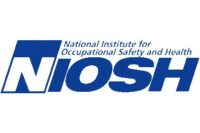EPA’s Office of Enforcement and Compliance Assurance (OECA) is requesting comments on which of the current six National Emphasis Initiatives (NEI) should continue, be expanded or returned to the standard enforcement program, and whether it should address new NEIs.
EPA’s current six NEIs are:
Reducing air pollution from the largest sources. This NEI has focused on ensuring that large industrial facilities comply with the Clean Air Act (CAA) when building new facilities or making modifications to existing facilities. EPA has targeted this effort on coal-fired power plants, as well as acid, glass and cement manufacturing facilities. Large percentages of facilities in these sectors are now under enforceable commitments to reduce pollution, although EPA states there are still violating facilities.
Cutting toxic air pollution. This NEI has focused on “the substantial illegal emissions of hazardous air pollutants (HAPs) from leaks, flares, and excess emissions at industrial facilities.” EPA is considering expanding this initiative into new focus areas and sources where it believes noncompliance is a growing threat.
Assuring energy extraction and production activities comply with environmental laws. EPA has been working with states to assure that domestic land-based natural gas extraction and production is done in an environmentally protective manner and in compliance with environmental laws. EPA has brought a number of high impact enforcement actions to address serious violations in this industry. This sector continues to develop and change rapidly, and EPA is evaluating the best way to address pollution problems in this sector, including opportunities for greater use of advanced monitoring.
Reducing pollution from mineral processing operations: EPA states that “mining and mineral processing facilities generate more toxic and hazardous waste than any other industrial sector.” Through this NEI EPA has thus focused on the largest and highest risk mineral processing operations, to ensure that they properly manage their wastes and have sufficient financial assurance to close facilities. This NEI has resulted in a number of large, high impact cases to ensure proper handling of these hazardous wastes. By the end of FY16 many of the highest risk mineral processing facilities are expected to be under enforceable agreements or orders that will require them to properly address hazardous waste.
Keeping raw sewage and contaminated storm water out of our Nation’s waters: Under this NEI EPA has tackled significant water pollution problems within communities that result from Clean Water Act (CWA) noncompliance. Many communities with raw sewage discharges are now under enforceable commitments to reduce pollution, including numerous communities that have embraced green infrastructure as a solution. EPA states that it will need to continue to monitor implementation of these long-term agreements, and adapt them to changing circumstances and new information, such as the increasing commitment of cities to implement green infrastructure, changes in financial capability, or technological advances.
Preventing animal waste from contaminating surface and ground water: The focus of this NEI has been reduction of animal waste pollution that impairs our nation’s waters, threatens drinking water sources, and adversely impacts communities. EPA’s enforcement strategy for this NEI has focused on animal agriculture operations that have a significant impact or where action is necessary to ensure that all operations in the sector play by the same rules. EPA is considering an updated strategy to explore the use of nutrient recovery technologies that show promise to reduce water pollution, implementation of in-stream monitoring to demonstrate impacts to water quality and identify violations, as well as new tools to identify the most significant violators.
New NEIs being considered by EPA are:
Protecting Communities from Exposure to Toxic Air Emissions: EPA is considering expanding its current air toxics NEI to include emissions from additional sources and industries., with a primary focus on organic liquid storage tanks and hazardous waste air emissions. With respect to the latter, EPA is particularly concerned about the toxic air emissions from hazardous waste treatment, storage, and disposal facilities (TSDFs) and large quantity generators (LQGs) that are not properly controlling hazardous waste releases to the air.
Keeping industrial pollutants out of the nation’s waters: EPA states that many waters (including sediments) around the country are polluted by nutrients and metals. This potential NEI would focus on the top sectors that have many violations and that EPA claims are responsible for contributing to surface water pollution and putting drinking water at risk. This includes the mining, chemical manufacturing, food processing and primary metals manufacturing sectors. In addition to being a focused attempt to reduce serious water pollution across the nation, selecting this as an NEI would allow for a national approach for those companies that operate in more than one state and would support a consistent national strategy to achieve compliance across industry sectors.
Reducing the Risks and Impacts of Industrial Accidents and Releases. This potential NEI would be a targeted focus on the facilities and the chemicals that pose the greatest risks of industrial accidents and releases. EPA would take a proactive approach under this NEI, instead of addressing problems after accidents happen, thereby reducing the risk of harm to communities and workers.


